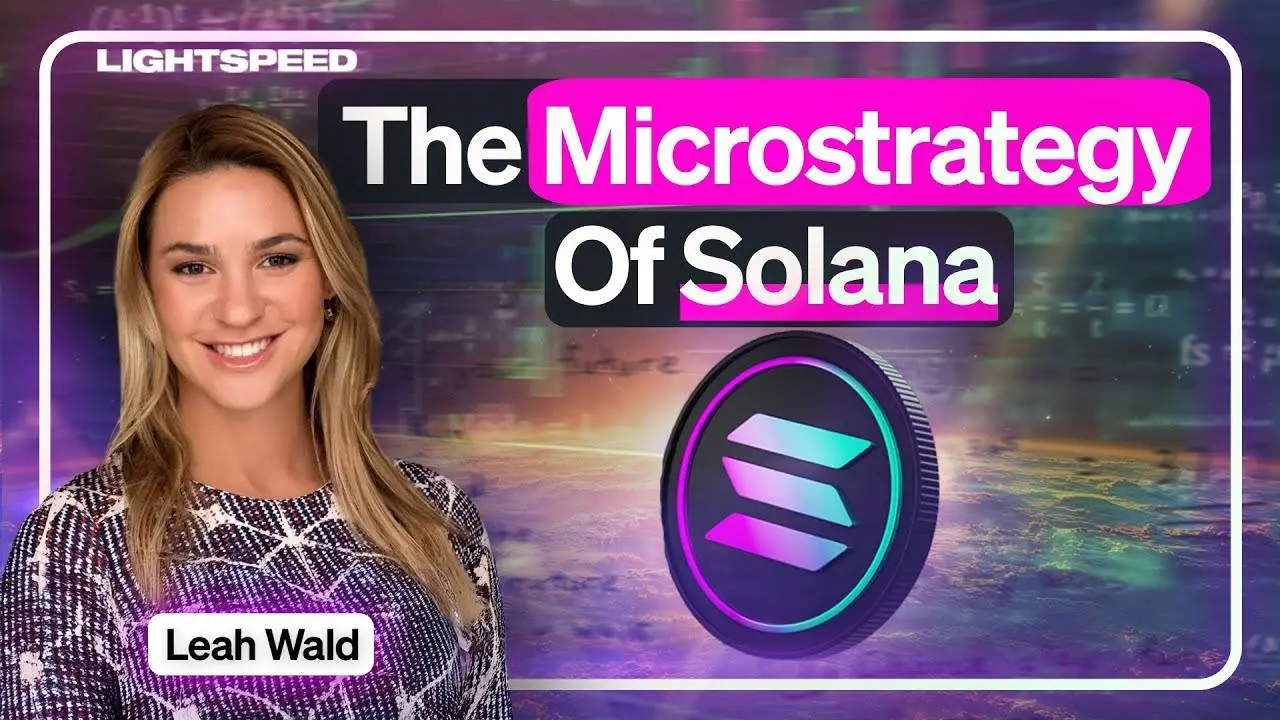Solana's Illusion and Reality: From Supercycle Aspirations to House of Cards Concerns
Original Title: SOL - The Emperor's New Clothes
Source: Flip Research
Compiled by: Daisy, MarsBit
SOL - The Emperor's New Clothes
Recently, my timeline has been filled with $SOL nonsense, mixed with excuses for memecoins. I started to believe that the memecoin supercycle is real, and that Solana will replace Ethereum as the leading L1. But then I began to dig into the data, and the results were at least concerning… In this article, I present my findings and why Solana might be a house of cards.
First, let’s look at the state of the bull market, summarized as follows:

Compared to ETH plus L2s, there are four different narratives in the metrics:
High percentage of user base
Corresponding increase in fees
High DEX trading volume
Significant increase in stablecoin trading volume
User Base Comparison:
Here’s a comparison between the ETH mainnet and SOL (only comparing mainnets, as the vast majority of fees post-Dencun come from the mainnet, source: @tokenterminal):

On the surface, SOL's numbers look good, with daily active users (DAU) exceeding 1.3 million, while ETH has 376,300. However, when I added transaction counts to the mix, I noticed something strange. For example, on Friday, July 26, ETH had a transaction volume of 1.1 million, with a DAU of 376.3 thousand, averaging about 2.92 transactions per user per day. However, SOL had a transaction volume of 282.2 million, with a DAU of 1.3 million, averaging as high as 217 transactions per user per day. I think this might be due to low fees allowing for more transactions, more frequent compounding positions, increased arbitrage bot activity, etc. Therefore, I compared it with another popular chain, Arbitrum. However, Arb had only 4.46 transactions/user on the same day. Checking other chains yielded similar results:

Given the user count is higher than ETH, I checked Google Trends, which should be quite uncertain in terms of value per user:

ETH is either on par with SOL or ahead of SOL. Considering the DAU difference, along with all the hype surrounding the SOL memecoin trend, this is not what I expected. So what exactly is happening?

DEX Trading Volume Analysis
To understand the differences in transaction counts, looking at Raydium's LP helps. Even at first glance, some issues are apparent:

Initially, I thought this was just low liquidity fake trading on honeypot LPs to lure in strange memecoin degenerates, but the situation is much worse based on the charts:

Every low liquidity pool is a project that has struggled to operate in the past 24 hours. Take MBGA as an example, in the past 24 hours, there were 46,000 transactions on Raydium, with a trading volume of $10.8 million, involving 2,845 unique wallets, generating over $28,000 in fees. (Note that a similarly sized legitimate LP, $MEW, only generated 11.2K transactions.) From the wallets involved, the vast majority seem to be bots within the same network, with tens of thousands of transactions. They independently generate fake trading volume, with SOL amounts and transaction counts being random until the project is completed, then moving on to the next project. In the past 24 hours, there were over 50 rugs on Raydium's standard LP with trading volumes exceeding $2.5 million, generating over $200 million in total trading volume and over $500,000 in fees. The rugs on Orca and Meteora seem to be much fewer, and I found it hard to find any rugs with meaningful trading volume on Uniswap (ETH). Clearly, there are serious issues with rugs on Solana, with various implications:
Given the abnormally high transaction-to-user ratio and the number of on-chain fake/fraudulent transactions, it seems that the vast majority of transactions are inorganic. The highest daily transaction-to-user ratio on major ETH L2s is 15.0 times, on Blast (which also has low fees and users are farming Blast S2). Roughly comparing, if we assume the real SOL transaction-to-user ratio is similar to Blast, it means over 93% of transactions (and fees) on Solana are inorganic.
The only reason these scams exist is that they are profitable. Therefore, the amount lost by users is at least equal to the fees generated + transaction costs, amounting to millions of dollars daily.
Once deploying these scams becomes unprofitable (i.e., when actual users get tired of losing), you would expect most of the trading volume and fee revenue to decline.
Thus, it appears that users, organic fees, and DEX volume are all severely inflated.
I am not the only one reaching these conclusions; @gphummer recently posted similar content:

MEV on Solana
MEV on Solana is in a unique position. Unlike Ethereum, it does not have a built-in mempool; instead, entities like @jito_sol created (now deprecated) off-chain infrastructure to simulate mempool functionality, allowing for MEV opportunities such as front-running, sandwich attacks, etc. Helius Labs compiled a detailed article introducing MEV: https://www.helius.dev/blog/solana-mev-an-introduction. The issue with Solana is that the vast majority of tokens traded are highly volatile and have low liquidity memecoins, with traders often setting slippage for trades at >10% to ensure successful execution. This provides a lucrative attack surface for MEV to extract value:

If we look at the profitability of block space, it’s clear that most of the value now comes from MEV tips:

While this is "real" value in the strictest sense, MEV is only implemented when it is profitable, i.e., as long as retail continues to mimic (and net lose) the memes. Once the memes start to cool off, MEV fee revenue will also collapse. I see many SOL papers discussing how infrastructure building will eventually rotate, like $JUP, $UNION, etc. This is very likely, but it’s worth noting that they have lower volatility and higher liquidity, and simply cannot provide the same MEV opportunities. Experienced players will be incentivized to build the best infrastructure to exploit this situation. During my digging, some sources mentioned rumors that these players invest in controlling mempool space and then sell access to third parties. But I cannot confirm this information. However, there are some obvious improper incentives—by directing as much meme coin activity to SOL as possible, it allows savvy individuals to continue profiting from MEV, insider trading of the mentioned memes, and the appreciation of SOL prices.
Stablecoins
Speaking of stablecoin trading volume + TVL, there’s another strange phenomenon. The trading volume is significantly higher than ETH, but when we look at @DefiLlama's stablecoin data, ETH has $80 billion in stable TVL, while SOL only has $3.2 billion. I believe that stablecoins (and broader) TVL is a metric that is harder to manipulate than trading volume/fees on low-fee platforms, as it only shows how many skins are in the game. The dynamics of stablecoin trading volume highlight this—@WazzCrypto noted a sudden drop in trading volume after the CFTC announced an investigation into Jump:

Retail Value Extraction
Aside from rugs and MEV, the outlook for retail remains bleak. Celebrities have chosen Solana as their preferred chain, but the results are not optimistic:

Andrew Tate's DADDY is the best-performing celebrity token, with a return of -73%. The situation at the other end of the boxing skill spectrum is not much better:

A quick search on X also reveals rampant insider trading and evidence of developers dumping on buyers:

But Flip, my timeline is full of those who made millions trading memes on Solana. What does that have to do with what you’re saying?
I do not believe that KOL posts on X can represent a broader user base. Under the current frenzy, they can easily enter a position, promote their tokens, profit from their followers, and then repeat the process. There is definitely a survivor bias here—the voices of the winners far outweigh those of the losers, creating a distorted view of reality. Objectively speaking, retail seems to be suffering millions of dollars in losses daily, including scammers, developers, insiders, MEV, KOLs, and this does not even consider that most of what they trade on Solana is just unsupported memes. It’s hard to deny that most memes ultimately trend towards $floor.
Other Considerations
The market is volatile, and when sentiment shifts, factors that buyers once overlooked become clear:
Poor chain stability with frequent outages
High transaction failure rates
Unreadable explorers
Higher development barriers, with Rust being far less user-friendly than Solidity
Poor interoperability compared to EVM. I believe it is much healthier to have multiple interoperable chains competing for our attention than to be tethered to a single (rather centralized) chain.
From a regulatory and demand perspective, the likelihood of an ETF is very low. This text itself highlights why institutional demand would be low in Solana's current state. @malekanom also emphasized some points I believe are relevant from a traditional finance perspective (and @0xmert):

Emissions of up to 67,000 SOL/day ($12.4 million)
FTX Estate sales still have 41 million SOL ($7.6 billion) locked. Of which, 7.5 million ($1.4 billion) will unlock in March 2025, with an additional 609,000 ($113 million) unlocking monthly until 2028. The purchase price for most tokens seems to be around $64 each.
Conclusion
As always, those selling shovels and picks profit from the Solana memecoin craze, while speculators are left stripped bare, often unknowingly. I believe the commonly cited SOL metrics are severely inflated. Furthermore, the vast majority of natural users are rapidly losing on-chain funds due to bad actors. We are currently in a frenzy phase, with retail inflows still exceeding the outflows of these seasoned players, which is encouraging. Once users become exhausted from ongoing losses, many metrics will collapse rapidly. As mentioned, SOL also faces some fundamental resistance, which will become apparent once market sentiment shifts. Any price increase will exacerbate inflationary pressures/unlocking. Ultimately, I believe SOL is overvalued from a fundamental perspective, although the existing sentiment + momentum may drive prices up in the short term, the long-term outlook is much more uncertain.









